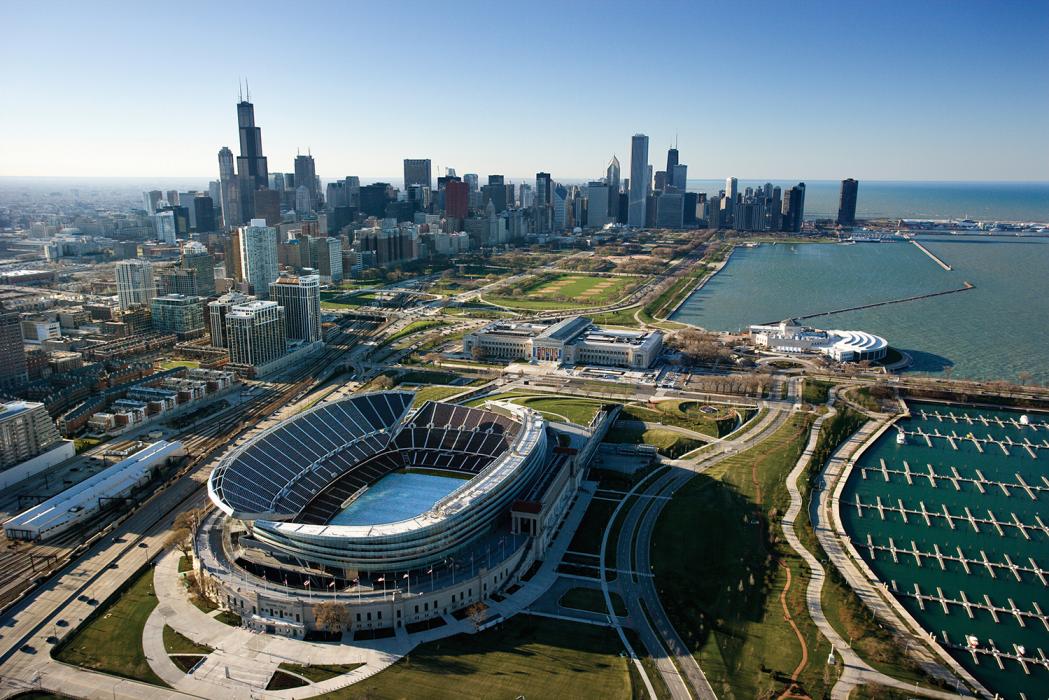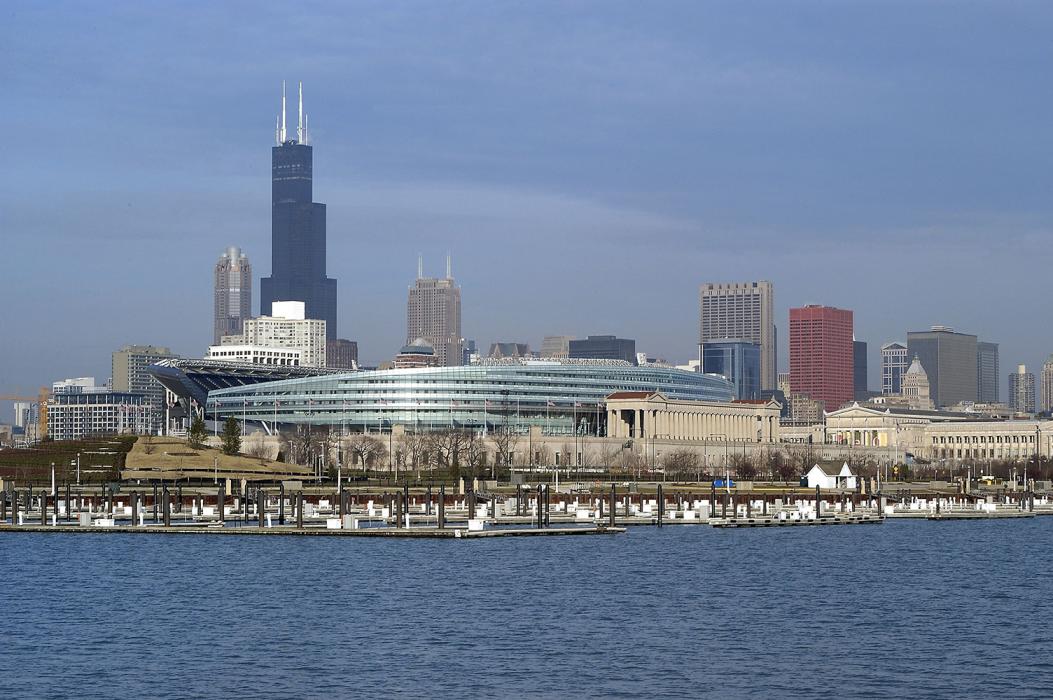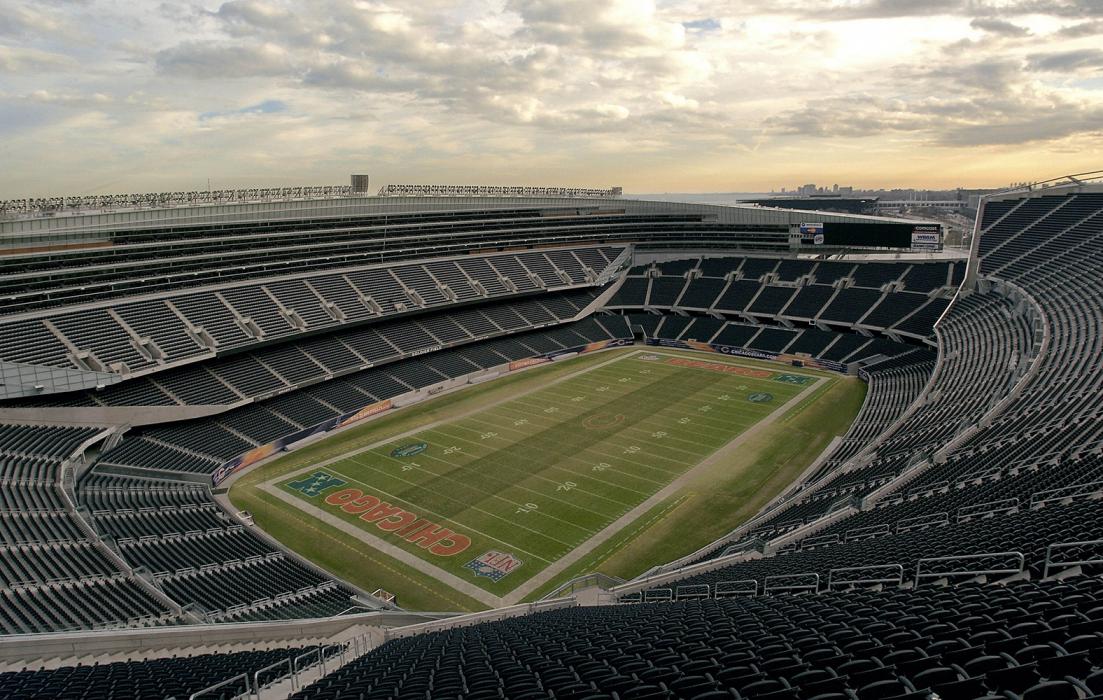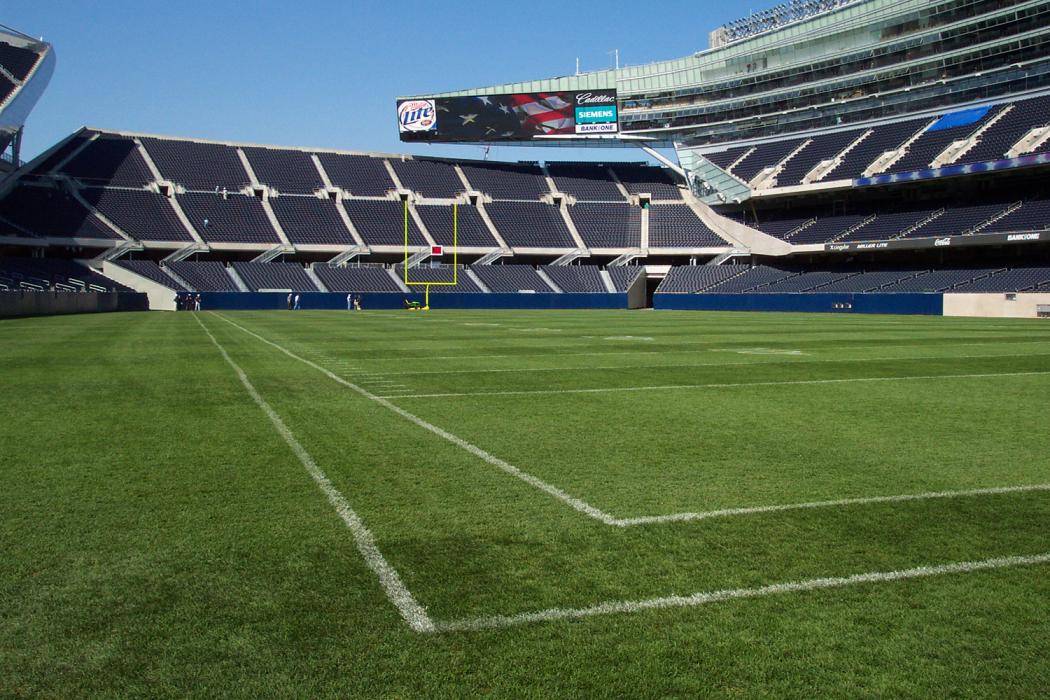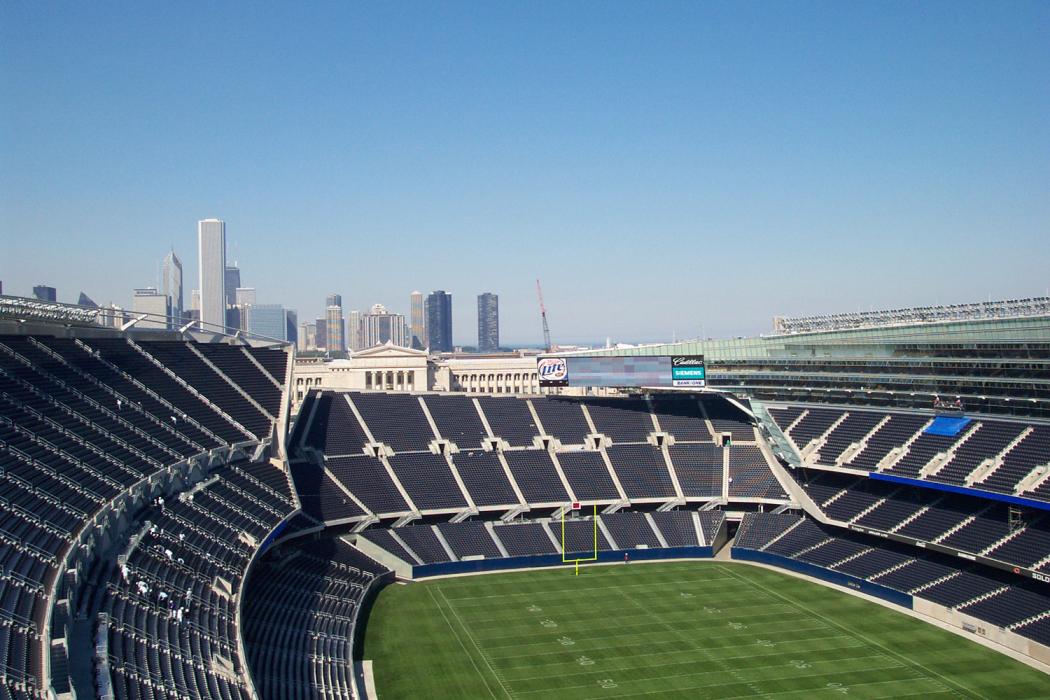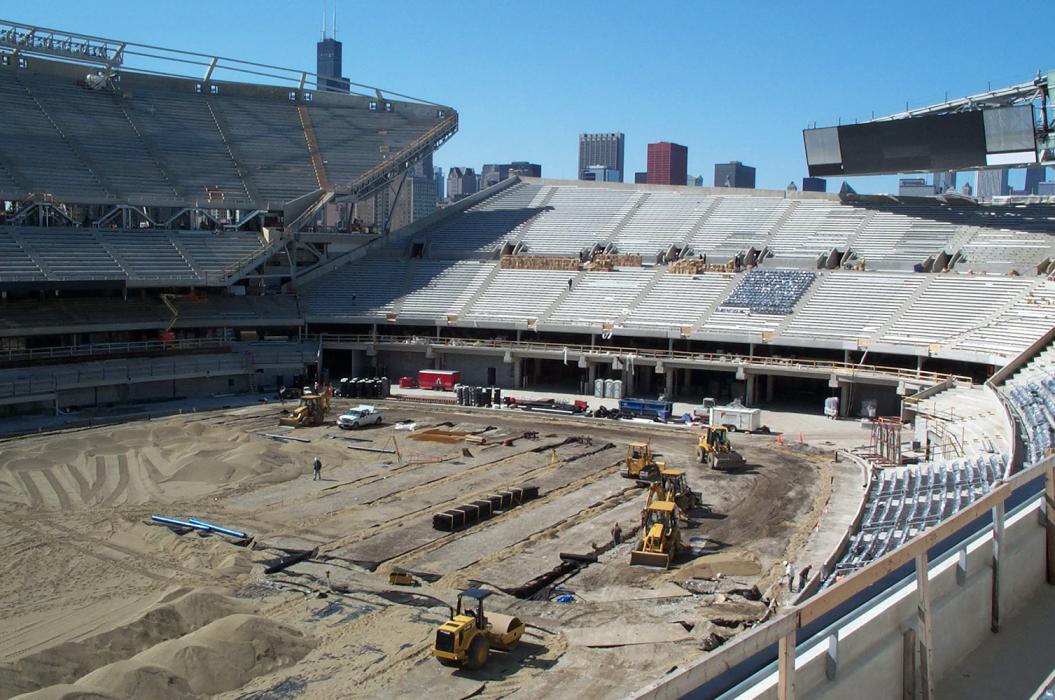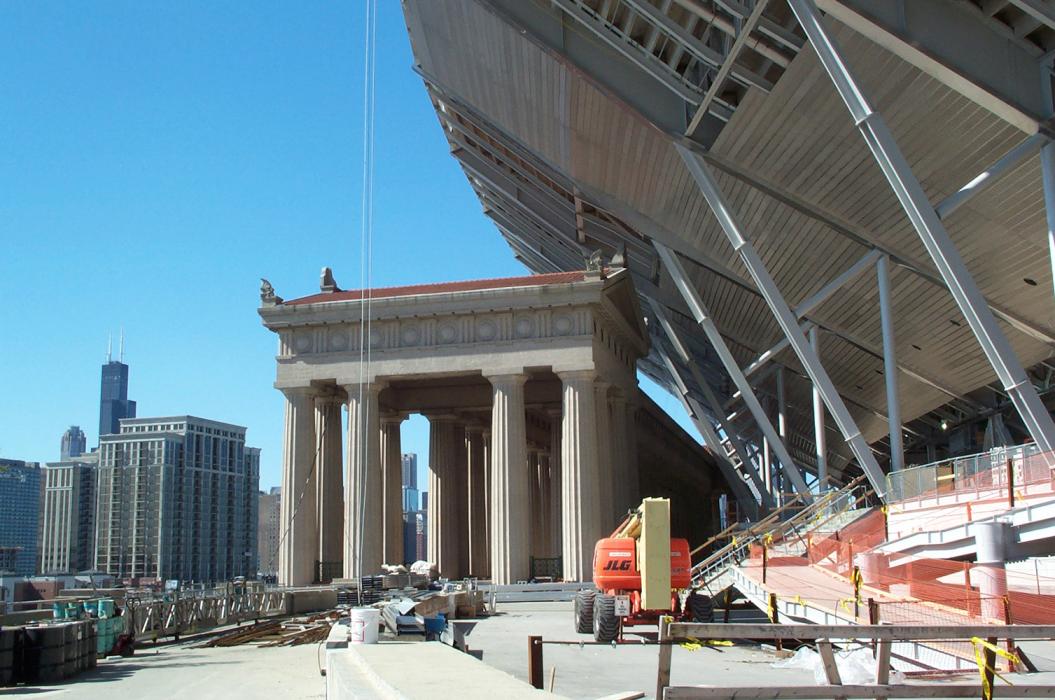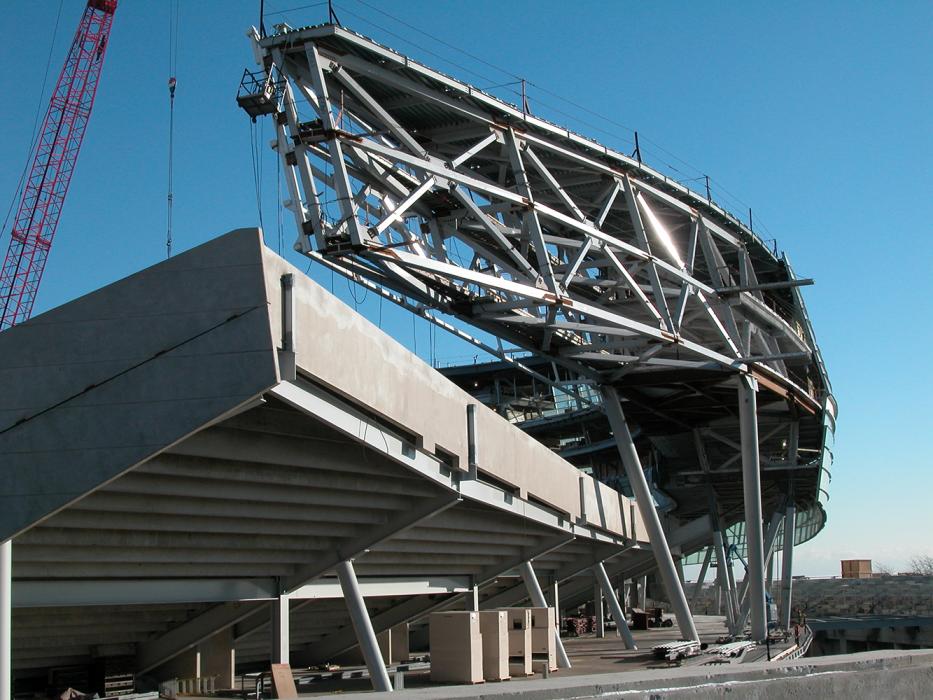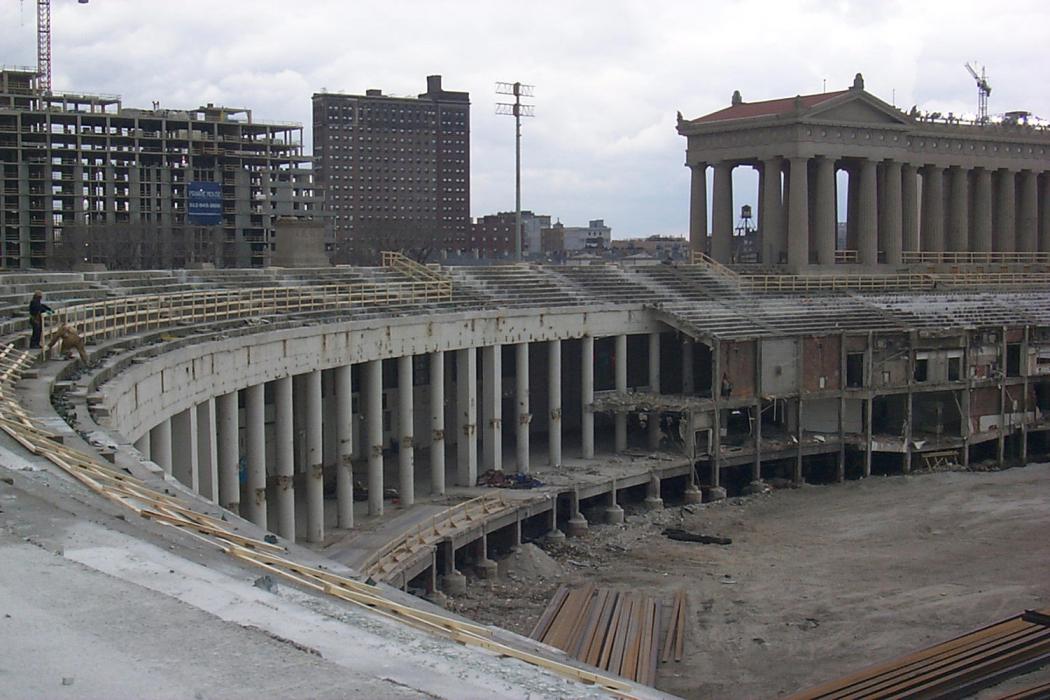Soldier Field, Adaptive Reuse
The adaptive reuse of Chicago’s historic Soldier Field tackled complex geometry, a restricted site, and fitting a new stadium inside the shell of the old one—on a 20-month schedule.
Lead Contact
Project Details
A Pioneer in Delivering the 3D Model
The adaptive reuse of Chicago’s historic Soldier Field tackled complex geometry, a restricted site, and fitting a new stadium inside the shell of the old one—on a 20-month schedule. The project, completed in 2003, is an early instance of Tekla 3D modeling of the steel frame. The model was shared throughout the supply chain to complete construction 17 percent faster than the best conventional case. BIM also was use for quality take-offs, conflict check and validating steel geometry.
We provided structural design, construction engineering, historic preservation, structural renewal and acoustics, noise and vibration services to LW+Z, a Joint Venture of Lohan Caprile Goettsch Architects and Wood + Zapata, for the renovation, which consisted of a new 61,500-seat stadium bowl, as well as the addition of a new partially underground parking garage for 2,500 cars.
Highlights
- Steel rakers supporting the upper grandstand cantilever 60 feet over the historic colonnades, one of the longest such cantilevers supporting crowds.
- Luxury suites and club seating cantilever over 100 feet above the end-zone seating and providing support for massive video displays.
- To control vibration in the cantilevered sections, we worked with Swallow Acoustics Consultants, Ltd. – now part of Thornton Tomasetti – to analyze the structure’s vibrational characteristics and design mitigation measures. Twenty-one tuned mass dampers (TMDs), each 20 tons, limit undesirable movement.
- A 64-channel permanent vibration monitoring system monitors motion of the rakers and TMDs.

